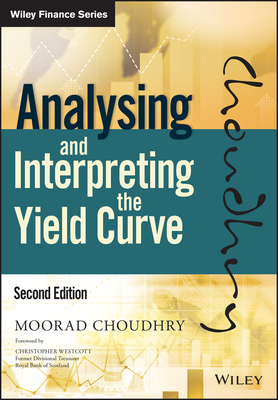Modeling Structured Finance Cash Flows with Microsoft Excel: A Step-by-Step Guide (Paperback)
暫譯: 使用 Microsoft Excel 建模結構性金融現金流:逐步指南 (平裝本)
Keith A. Allman
相關主題
商品描述
Description
A practical guide to building fully operational financial cash flow models for structured finance transactions
Structured finance and securitization deals are becoming more commonplace on Wall Street. Up until now, however, market participants have had to create their own models to analyze these deals, and new entrants have had to learn as they go. Modeling Structured Finance Cash Flows with Microsoft Excel provides readers with the information they need to build a cash flow model for structured finance and securitization deals. Financial professional Keith Allman explains individual functions and formulas, while also explaining the theory behind the spreadsheets. Each chapter begins with a discussion of theory, followed by a section called "Model Builder," in which Allman translates the theory into functions and formulas. In addition, the companion CD-ROM features all of the modeling exercises, as well as a final version of the model that is created in the text.
Note: CD-ROM/DVD and other supplementary materials are not included as part of eBook file.
Table of Contents
Preface.Acknowledgments.
About the Author.
Introduction.
The Three Basic Elements of a Cash Flow Model.
Inputs.
Cash Flow Structure.
Outputs.
The Process of Building a Cash Flow Model.
Plan and Design.
Obtain All Necessary Information.
Construct Basic Framework.
Develop Advanced Structure.
Validate Assumptions.
Test Model.
How This Book Is Designed.
CHAPTER 1. Dates and Timing.
Time Progression.
Dates and Timing on the Inputs Sheet.
Day-Count Systems: 30/360 versus Actual/360 versus Actual/365.
Model Builder 1.1: Inputs Sheet—Dates and Timing.
Dates and Timing on the Cash Flow Sheet.
Model Builder 1.2: Cash Flow Sheet—Dates and Timing.
Toolbox.
Naming Cells and Ranges.
Data Validation Lists.
EDATE.
CHAPTER 2. Asset Cash Flow Generation.
Loan Level versus Representative Line Amortization.
How Asset Generation Is Demonstrated in Model Builder.
Asset Generation on the Inputs Sheet.
Fixed Rate Amortization Inputs.
Floating Rate Amortization Inputs.
Model Builder 2.1: Inputs Sheet Asset Assumptions and the Vectors Sheet.
Asset Generation on the Cash Flow Sheet.
Model Builder 2.2: Notional Asset Amortization on the Cash Flow Sheet.
Toolbox.
OFFSET.
MATCH.
MOD.
PMT.
CHAPTER 3. Prepayments.
How Prepayments Are Tracked.
SMM: Single Monthly Mortality.
CPR: Conditional Prepayment Rate.
PSA: Public Securities Association.
ABS: Absolute Prepayment Speed.
Historical Prepayment Data Formats.
Building Prepayment Curves.
Prepayment Curves in Project Model Builder.
The Effect of Prepayments on Structured Transactions.
Model Builder 3.1: Historical Prepayment Analysis and Creating a Projected Prepayment Curve.
Model Builder 3.2: Integrating Projected Prepayments in Asset Amortization.
Toolbox.
Weighted Averages Using SUMPRODUCT and SUM.
CHAPTER 4. Delinquency, Default, and Loss Analysis.
Delinquencies versus Defaults versus Loss.
The Importance of Analyzing Delinquency.
Model Builder 4.1: Building Historical Delinquency Curves.
Deriving Historical Loss Curves.
Model Builder 4.2: Building Historical and Projected Loss Curves.
Analyzing Historical Loss Curves.
Model Builder 4.2 Continued.
Projecting Loss Curves.
Model Builder 4.2 Continued.
Integrating Loss Projections.
The Effects of Seasoning and Default Timing.
Model Builder 4.3: Integrating Defaults in Asset Amortization.
CHAPTER 5. Recoveries.
Model Builder 5.1: Historical Recovery Analysis.
Projecting Recoveries in a Cash Flow Model.
Model Builder 5.2: Integrating Recoveries into Project Model Builder.
Final Points Regarding Recoveries.
CHAPTER 6. Liabilities and the Cash Flow Waterfall.
Priority of Payments and the Cash Flow Waterfall.
The Movement of Cash for an Individual Liability.
Types of Liabilities.
Fees.
Model Builder 6.1: Calculating Fees in the Waterfall.
Interest.
Model Builder 6.2: Calculating Interest in the Waterfall.
Principal.
Model Builder 6.3: Calculating Principal in the Waterfall.
Understanding Basic Asset and Liability Interactions.
CHAPTER 7. Advanced Liability Structures: Triggers, Interest Rate Swaps, and Reserve Accounts.
Triggers and Their Affect on the Liability Structure.
Model Builder 7.1: Incorporating Triggers.
Swaps.
Model Builder 7.2: Incorporating a Basic Interest Rate Swap.
Final Notes on Swaps.
Reserve Accounts.
Model Builder 7.3: Incorporating a Cash-Funded Reserve Account.
Conclusion of the Cash Flow Waterfall.
Toolbox.
AND and OR.
CHAPTER 8. Analytics and Output Reporting.
Internal Testing.
Cash In versus Cash Out.
Model Builder 8.1: Cash In versus Cash Out Test.
Balances at Maturity.
Model Builder 8.2: Balances at Maturity Tests.
Asset Principal Check.
Model Builder 8.3: Asset Principal Check Test.
Performance Analytics.
Monthly Yield.
Model Builder 8.4: Calculating Monthly Yield.
Calculating the Monthly Yield.
Bond-Equivalent Yield.
Model Builder 8.5: Calculating Bond-Equivalent Yield.
Modified Duration.
Model Builder 8.6: Calculating Modified Duration.
Output Reporting.
Model Builder 8.7: Creating the Output Report.
The Importance of Testing and Output.
Toolbox.
Conditional Formatting.
Goal Seek.
Array Formulas.
CHAPTER 9. Understanding the Model.
The Complete Model in Review.
Understanding the Effects of Increased Loss.
Varying Principal Allocation Methodologies.
Varying Prepayment Rates.
Varying Loss Timing.
Varying Recovery Rate and Lag.
The Value of a Swap.
Additional Testing.
CHAPTER 10. Automation Using Visual Basic Applications (VBA).
Conventions of This Chapter.
The Visual Basic Editor.
The Menu Bar.
The Project Explorer and the Properties Window.
VBA Code.
Simple Automation for Printing and Goal Seek.
Model Builder 10.1: Automating Print Procedures.
Model Builder 10.2: Automating Goal Seek to Optimize Advance Rates.
Understanding Looping to Automate the Analytics Sheet.
Model Builder 10.3: Automating Goal Seek to Perform Transaction Analytics.
Automated Scenario Generation.
Model Builder 10.4: Creating a Transaction Scenario Generator.
Working with Macros in Excel.
CHAPTER 11. Conclusion.
The Investment Banker’s Perspective.
The Investor’s Perspective.
The Issuer’s Perspective.
The Financial Guarantor’s Perspective.
The Big Picture Perspective.
Appendix: Using This Book with Excel 2007.
About the CD-ROM.
Index.
商品描述(中文翻譯)
描述
一本實用指南,教你如何為結構性金融交易建立完全運作的財務現金流模型。
結構性金融和證券化交易在華爾街變得越來越普遍。然而,迄今為止,市場參與者必須自行創建模型來分析這些交易,而新進者則必須邊學邊做。《使用 Microsoft Excel 建模結構性金融現金流》為讀者提供了建立結構性金融和證券化交易現金流模型所需的信息。金融專業人士 Keith Allman 解釋了各個函數和公式,同時也解釋了電子表格背後的理論。每一章都以理論討論開始,接著是名為「模型建構者」的部分,Allman 將理論轉化為函數和公式。此外,隨書附贈的 CD-ROM 包含所有建模練習,以及文本中創建的模型的最終版本。
注意:CD-ROM/DVD 和其他補充材料不包含在電子書文件中。
目錄
前言
致謝
關於作者
導言
現金流模型的三個基本元素
輸入
現金流結構
輸出
建立現金流模型的過程
計劃與設計
獲取所有必要信息
構建基本框架
開發高級結構
驗證假設
測試模型
本書的設計
第一章 日期與時間
時間進程
輸入表上的日期與時間
日數計算系統:30/360 與實際/360 與實際/365
模型建構者 1.1:輸入表—日期與時間
現金流表上的日期與時間
模型建構者 1.2:現金流表—日期與時間
工具箱
命名單元格和範圍
數據驗證列表
EDATE
第二章 資產現金流生成
貸款級別與代表性線性攤銷
如何在模型建構者中演示資產生成
輸入表上的資產生成
固定利率攤銷輸入
浮動利率攤銷輸入
模型建構者 2.1:輸入表資產假設與向量表
現金流表上的資產生成
模型建構者 2.2:現金流表上的名義資產攤銷
工具箱
OFFSET
MATCH
MOD
PMT
第三章 提前還款
如何追蹤提前還款
SMM:單一











